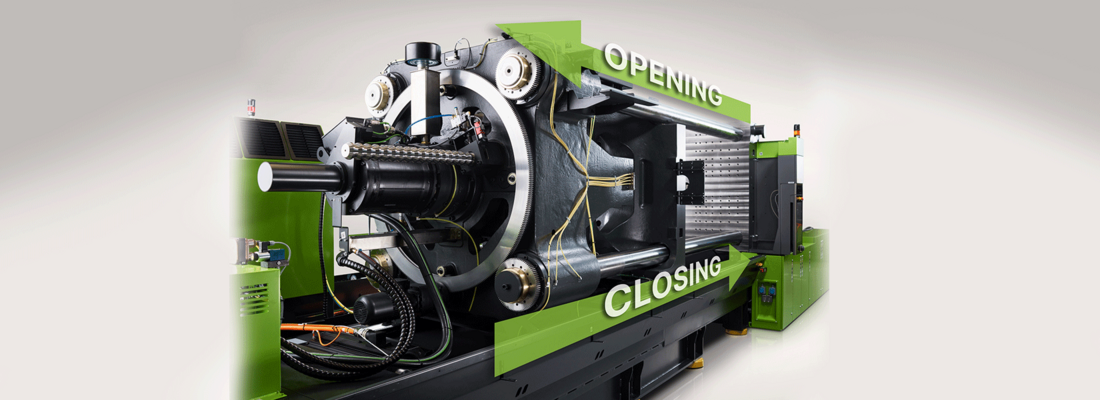In high speed applications, the time the injection moulding machine takes to open and close the mould is a material part of the cycle time. Like a robot arm, the moving mould mounting platen on the injection moulding machine does not simply open and close; instead it follows individual motion points. These points split the movement into phases and this is precisely where the key to optimisation lies. For each individual phase, iQ motion control software computes the optimum acceleration for the matching machine setting.
The best possible motion for every application
The basis for the calculations is the configured mould stroke and the clamp force, but also the mould weight. iQ motion control optimises autonomously at the push of a button. The software optimises the acceleration phases, increasing the speed of the platen by doing so. This allows for faster part removal and, in turn, a shorter cycle time.
The injection moulding machine does not require additional energy for this performance boost. Higher connected loads are not needed. The software simply leverages the existing potential of the machine and the drive technology to the max without increasing the load on the machine and the drives.
When adjusting the opening stroke or during a mould change, for example, the motion ramps are often not optimally readjusted due to pressure of time, or a reserve is configured due to the different mould weights. iQ motion control makes this a thing of the past. No matter which parameter changes, the best possible trajectory is always computed, utilising the physical limits, to achieve the shortest possible cycle time.
Live at the K show in packaging production
ENGEL is demonstrating how iQ motion control works in practice at its stand in Hall 15 in Düsseldorf with a sophisticated packaging application. An ENGEL e-speed injection moulding machine is producing 125-ml round containers from rPET with a 4-cavity mould using thin-wall injection moulding and in-mould labelling. These containers are used for packaging foods. And the cycle time is accordingly critical for the producer's competitiveness. Analysis of the cycle time has shown that mould opening and closing accounts for a particularly high proportion of the total cycle time in this high-performance application. Without iQ motion control the time required for the mould movement is 1.27 seconds. With iQ motion control enabled, the machine only needs 1.12 seconds for the mould movement. This is equivalent to time savings of twelve percent. The reduction for the total cycle time is five percent, with a drop from 3.15 to 3 seconds.






